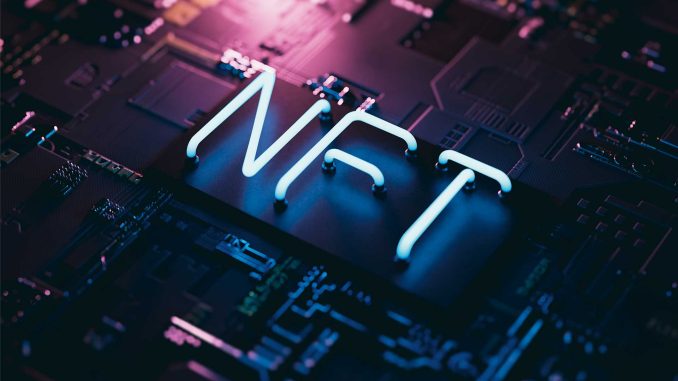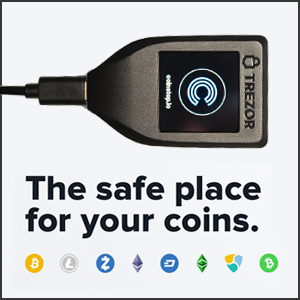
One of the things I love about physical books is the way people share them. From gifting and swapping books with friends, to buying old library books with the original stamps from borrowers. I typically read physical books, but I love that digital books can find a wider audience around the world.
I’ve written half a dozen books that have been translated into a dozen languages, and I have thoroughly benefited and learned from the opportunity to work with publishers at Bloomsbury and Kogan Page. Early in my writing career, I relished their expertise and support, and would have had neither the confidence nor the experience to publish and promote a book using emerging technology.
I’ve written about the psychology of digital networks, communication and the workplace for over a decade, so I’ve found the rise of blockchain fascinating, sometimes baffling, and always exciting. That’s why I chose to release the first edition of my latest book, Web of Value, as an NFT [non-fungible token]. I wanted to use the emerging technology that creates books as unique, limited edition works that embed authorship, ownership and provenance into the technology.
Web of Value explains the history and philosophy behind blockchain, along with the practical applications and counter-cultural ideas that have driven its adoption. Blockchain creates networks where work is traceable to its original creator, intellectual property can be embedded in the source code and buying a digital product means owning it.
So what is an NFT?
NFTs are digital assets with a piece of software and a unique cryptographic code that cannot be duplicated. Think of it as a digital token that contains a unique fingerprint and digital key. Anything that is possible to record digitally can be an NFT. It can be digital art or images, books, music, identity documents, magazines, or event tickets. The full text of Web of Value is stored on a peer-to-peer network. The file is encrypted. Only those with one of the 300 unique digital keys can decrypt the data, and read the book. Whoever holds the NFT has full control of it, and is free to hold onto it, send it to a friend, or to sell it on a third-party marketplace.
I wanted to use the emerging technology that creates books as unique, limited edition works that embed authorship, ownership and provenance into the technology
This means there are significant advantages and opportunities to publishing a book as an NFT:
New royalty models
The rules governing author royalties can be automatically embedded in each of those unique copies. As an author I receive royalties as a percentage of the sale price of all third-party NFT re-sales. This does not require complex negotiations with third-party resellers. NFTs shift some control back to authors and publishers: writing the rules of distribution and royalties into the code of the book.
Censorship resistance
Peer-to-peer blockchain networks are highly resistant to censorship. NFTs use blockchain technology that is incredibly difficult for any government or organisation to censor. The data is encrypted and immutable so no one can change the text. Immutability might be either exciting or anxiety-inducing for authors: your work cannot be censored but you can’t go back and fix typos!
Peer-to-peer connection
NFTs provide a direct connection with everyone who owns the book. This provides authors with new ways to connect directly with readers. For example, some musicians who have released singles or albums as NFTs have given NFT holders access to special concerts, events or early releases of their new work.
Provenance
Every time an NFT is traded, sold or transferred the provenance is recorded on the blockchain. It creates a complete and unbroken record of every transfer of every digital book. The author can gift a first edition copy to someone who supported with writing it. That person could send their copy to a friend, who could then sell it on a third-party marketplace. Every owner and transfer is recorded — making the history of each book unique and traceable back to the original owner.
But there are challenges too.
Selling books is already challenging using established technology and channels. A book takes a vast effort from both authors and publishers, so testing out new technology is not the right decision for everyone.
The medium was part of the message: I wanted to chart the rise of blockchain from a non-technical perspective, then to explore the psychology of complex and emerging digital networks online. I wanted a real and tangible example of blockchain technology that could directly connect me and readers with the technology. Web of Value, as a book, didn’t make sense until the technology made it possible. When Alexandria Books created new ways of publishing fiction and non-fiction books as NFTs, I was excited to try it out.
Amelie Lasker, founder of Alexandria Books, explains the challenges for publishers: “web3 is still nascent and many of the pieces needed are still in progress, both technically and legally. How does the definition of intellectual property shift when digital files can now be preserved forever? How do we use technology to ensure they are accessible forever? This is both a challenge and an opportunity as we pioneer new systems.”
As an author that writes about technology, I would recommend using the technology that you want to succeed. There’s a growing interdependence between people, technology and culture: but the value of any technology is ultimately dependent on people and culture.











